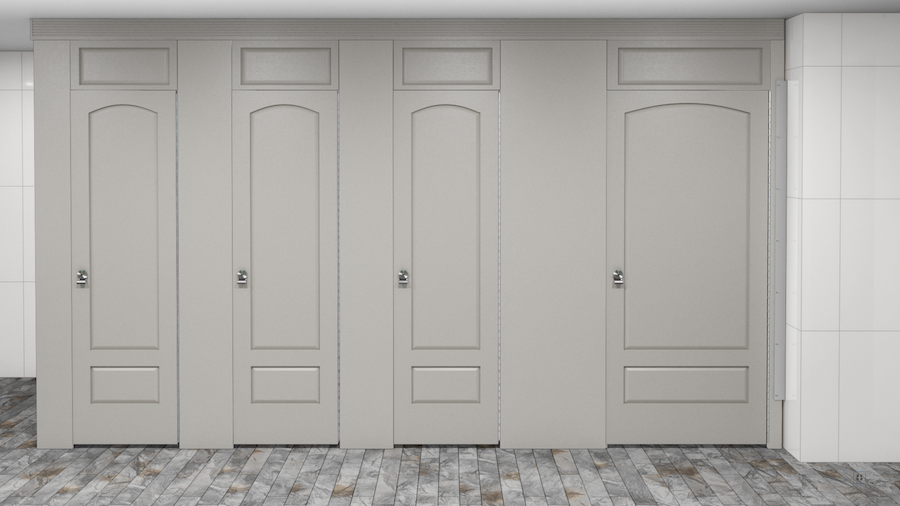There are several ways that you can make the commercial bathroom experience pleasant and enjoyable, rather than routine and unimpressive. As a facility manager, you’ll want to curate a sophisticated space for your occupants when they need to visit the restroom. Most commercial bathrooms are uninspiring and cookie-cutter, without any design implementations to make occupants reflect on how nice or stylish the facilities are. Luckily, there are a few ways to make your commercial bathroom more enjoyable through different designs and materials.
Here are five tips to create a sophisticated commercial bathroom experience for your occupants to enjoy.
Maximizing the Space for Your Commercial Bathroom
Even if you have the space and measurements plotted for the bathroom in your facility, you can still utilize some commercial bathroom design to amplify the space, making it a little more open and cozy. No one likes going to a cramped bathroom, so making use of your space is important. Luckily, you don’t have to scrap your original plan to make use of the space.
Using mirrors can help make your commercial bathroom seem a bit larger and more comfortable. Using a lot of mirrors will help amplify the space and by a slight optical illusion, your bathroom will seem bigger. Not only do mirrors take up very little space, but occupants will have plenty of opportunities to check their appearance before continuing their day.
Use Softer Colors and Proper Lighting
Most commercial restrooms have an unnatural feel to them, mainly because of their lack of character and the harsh lights. You can combat this, and make a more comfortable experience for your occupants, by utilizing softer colors as opposed to the bright and bland white. To add to this experience of warming up the room, you should use softer lights rather than the factory-esque fluorescent lights. Not only is it less harsh on the eyes, but it will give the restroom a more inviting feel.
Increase the Privacy
The key to occupants’ comfort in a public restroom is adequate privacy. This means utilizing materials to eliminate sightlines and design flaws. When it’s time to pick out the stalls, be sure to find ones that can help you decrease the exterior visuals. HDPE plastic partitions like Hiny Hider Partitions® and Eclipse Partitions® will help you reduce the sightlines, and they even have hidden hardware that will simply add to the aesthetics.
Preventing Mold from Ruining the Experience
Of the negative criticisms that occupants have of commercial bathrooms, smell ranks pretty high on the list. There’s nothing as off-putting as unpleasant smells emanating from your restrooms. In order to kill the odors where they stand, you’ll need to utilize materials to help counteract mold growth. Mold grows, and thrives, in humid and moist environments, which make your restroom the perfect breeding ground.
Mold tends to find its way into the core of common partition materials, which end up resulting in awful smells and a pricey replacement. But utilizing materials like HDPE plastic can help you prevent mold. HDPE is a solid plastic that can resist mold growth and can go a long distance in keeping your restroom smelling fresh and inviting.
Keeping the Restroom Clean
It’s no secret that your commercial restroom needs to be cleaned daily, but there are ways to ensure that it stays fresh for the occupants who will use it. You learned that HDPE plastic partitions and antibacterial bathroom hardware can help prevent mold growth, but it’s also beneficial to know that this material is also low-maintenance and easy to clean. Utilizing materials like this not only helps keep the facilities clean, but you won’t have to hold up the restroom flow by blocking it off during maintenance. The cleanup will be quick, easy, and efficient.
Want to learn more tips and tricks on how to make the commercial restroom experience more sophisticated and inviting? Check out our free eBook, Restroom Design for Commercial Facilities, from your friends at Scranton Products.


